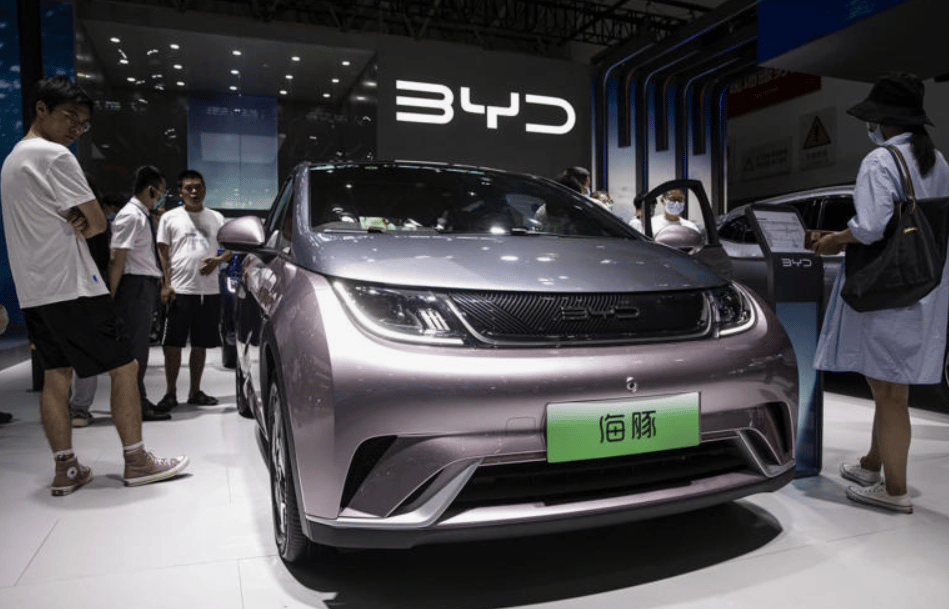BYD’s EV Surge Shakes Brazil’s Auto Market and Currency Outlook Amid Chinese Import Boom
In late May, the world’s largest car-carrying ship docked at the port of Itajaí, Brazil, marking more than a symbolic arrival. It carried thousands of electric and plug-in hybrid vehicles from BYD Co. Ltd. $002594.SZ — China’s largest new energy vehicle (NEV) producer — as part of an aggressive push into emerging markets. For Brazil, the ship’s docking also symbolizes deeper concerns over trade dynamics, industrial policy, and economic sovereignty in the face of surging Chinese auto imports.
The inflow of low-cost electric vehicles (EVs) from China arrives at a time when Brazil’s green vehicle market remains nascent. While this offers consumers broader access to affordable EVs, it has also sparked resistance from domestic automakers, industry unions, and policymakers wary of the long-term consequences for Brazil’s industrial base and employment levels.
Competitive Pressure and Structural Risks in Brazil's Auto Sector
The expansion of BYD and other Chinese EV makers into Brazil is part of a broader strategy to capture market share in developing economies where demand for affordable electric vehicles is rising. With Brazilian consumers drawn to lower price points and advanced battery technologies, local manufacturers face a significant disadvantage in production scale, supply chain maturity, and technological edge.
What alarms Brazilian industry officials is not only the sheer volume of imports — the ship in question carried vehicles across the equivalent space of 20 football fields — but the implications for domestic production capacity. Brazil’s automotive sector contributes roughly 20% to the country’s industrial GDP, and any loss of output or employment in this sector has direct fiscal and social consequences.

Quick Facts
🚢 Largest car-carrier ship delivered Chinese EVs to Brazil in May 2025.
🇨🇳 BYD is China’s largest electric and plug-in hybrid automaker.
🇧🇷 Brazil's auto sector represents 20% of industrial GDP.
💼 Local labor leaders warn of job losses due to Chinese import surge.
⚡ EV market in Brazil is still in early-stage development.
💰 Chinese EVs undercut domestic brands by 15–30% in price.
The risk for Brazil is the hollowing out of its domestic industrial ecosystem. Unlike China, which has built strong domestic content requirements and scaling subsidies, Brazil has yet to formulate a comprehensive industrial or tariff policy specifically targeting the EV segment. Without intervention, analysts suggest local brands and legacy automakers could be pushed into retreat or exit.
Market Response, Political Signals, and FX Implications
Beyond industry dynamics, the influx of Chinese vehicles carries broader implications for Brazil’s currency (BRL) and trade balances. A continued rise in auto imports may worsen Brazil’s current account, adding pressure to the BRL, which has already seen volatility amid external shocks and domestic fiscal uncertainty.
The Brazilian real (BRL) depreciated modestly following the vessel’s arrival, with traders pricing in expectations of trade policy shifts. Meanwhile, political leaders have begun debating possible tariff or quota-based interventions, similar to the U.S. and European responses to Chinese overcapacity in key sectors.
Market analysts are divided on the strategic path forward. Some advocate for localization incentives to attract EV manufacturing investment from BYD and its peers. Others push for protective tariffs, citing the risk of “deindustrialization” in key manufacturing zones.

Key Points
Strategic Entry by BYD: China's EV leader is leveraging scale and pricing advantages in Brazil.
Local Pushback: Unions and manufacturers fear job losses and domestic production displacement.
Trade Balance Impact: Growing vehicle imports may widen Brazil’s trade deficit.
Policy Uncertainty: Government debates potential tariffs or industrial incentives.
Currency Sensitivity: BRL shows vulnerability to shifts in trade and industrial policy.
The Geopolitics of EVs Hit Brazil’s Shores
The arrival of the world’s largest car carrier, loaded with Chinese electric vehicles, is more than a logistical milestone — it is a case study in how industrial overcapacity in one country can reshape market dynamics and political discourse in another. Brazil finds itself at a critical juncture: whether to welcome affordable green technology at the risk of hollowing out its own industry or to build policy buffers that ensure long-term industrial sovereignty.
For global observers, Brazil’s next steps may set a precedent for how developing economies adapt to the export surge of Chinese EVs, particularly as the world transitions toward decarbonization and electric mobility. The interplay between trade, currency, industrial resilience, and geopolitical power is now on full display in South America’s largest economy.















Comments